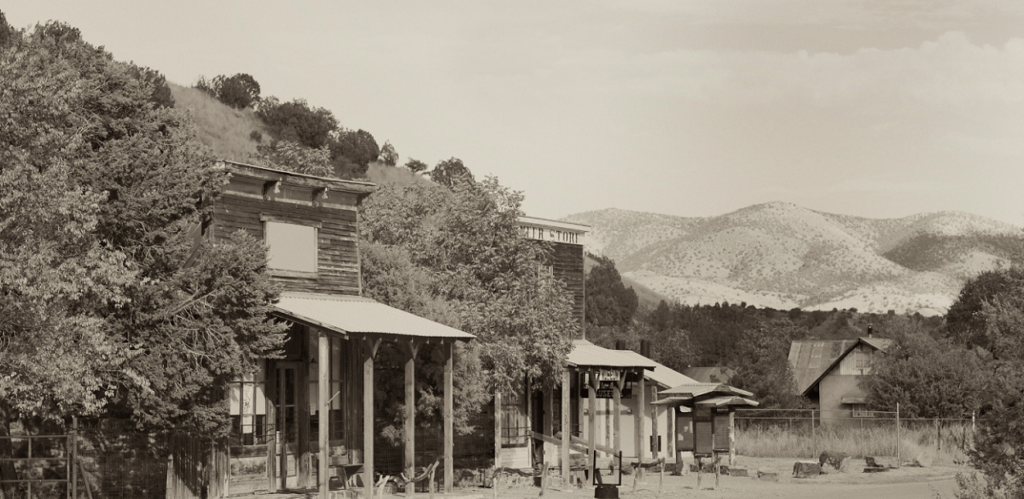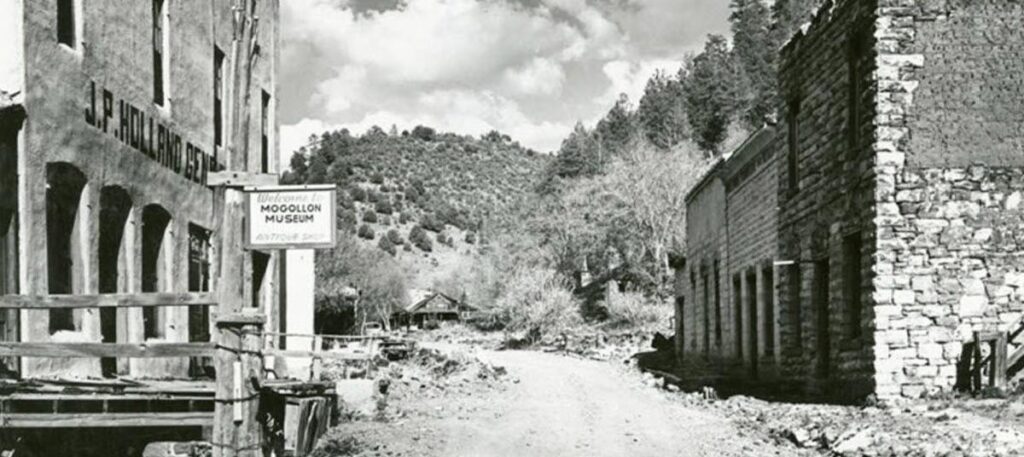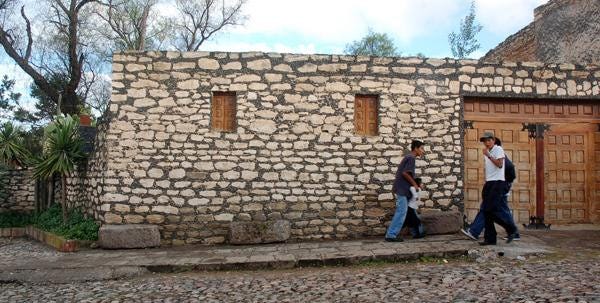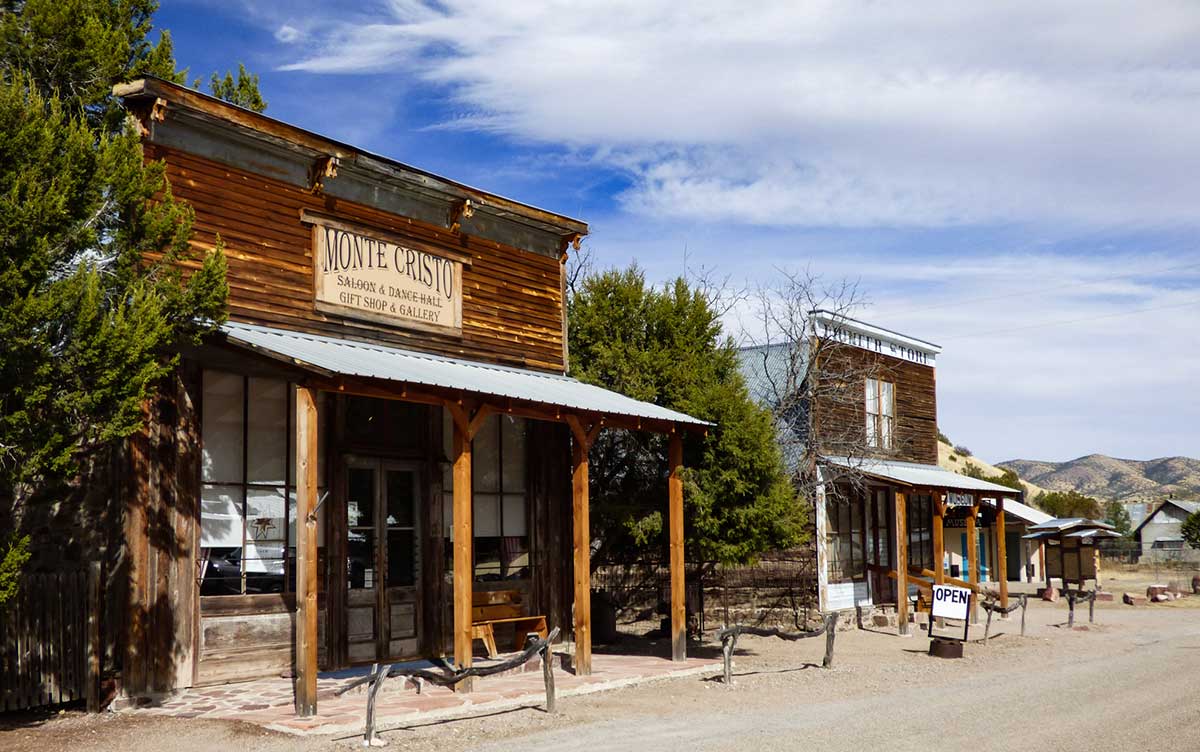In this article, you will learn about exploring Mexico’s historic mining towns and the fascinating journey into the past that awaits you. These towns are rich in history and offer a glimpse into Mexico’s mining heritage, with well-preserved colonial architecture and remnants of ancient mining techniques. You will discover the unique charm of these towns and the stories they tell about Mexico’s mining industry.
Imagine stepping back in time as you wander through the cobblestone streets of Mexico’s historic mining towns. From the grandeur of Guanajuato to the hidden gems of Real de Catorce, each town has its own distinctive character and allure. You will have the opportunity to visit well-preserved colonial buildings, such as churches, mansions, and town squares, that speak volumes about the rich history and culture of these towns. Furthermore, you will witness the remnants of ancient mining techniques, such as abandoned mines, tunnels, and ore processing facilities, which serve as a testament to the ingenuity and perseverance of the miners who once toiled in these hills. Mexico is a country rich in history and cultural heritage, and one of the key industries that has played a significant role in shaping its past is mining. From the colonial period to the present, mining has been an integral part of Mexico’s economy and has left an indelible mark on its landscape and communities. In this article, we will take you on a journey into the past as we explore Mexico’s historic mining towns, immersing ourselves in their rich history, unique experiences, and natural attractions.

Colonial Period and Spanish Influence
During the colonial period, Mexico was under Spanish rule, and mining played a crucial role in the development of the Spanish empire. The Spanish arrived in Mexico in the early 16th century and quickly recognized the wealth of mineral resources the country possessed. Silver, in particular, became the primary focus of mining activities, with vast deposits found in various regions.
Independence and Nationalization of Mining Industry
As Mexico gained its independence from Spain in the early 19th century, it sought to establish its own identity and control over its resources. One of the key steps towards this was the nationalization of the mining industry, which saw the Mexican government take ownership of mines and regulate their operations. This period marked a shift in the dynamics of mining, with Mexican workers playing a more significant role.
Boom and Bust Cycles in Mining
Throughout Mexico’s history, mining has experienced boom and bust cycles, driven by factors such as changes in technology and market demand. Regions that were once thriving mining towns saw periods of decline as resources depleted or global economic conditions shifted. However, these boom and bust cycles have also contributed to the unique character of Mexico’s historic mining towns, with remnants of past prosperity and architectural heritage still visible today.
Importance of Mining Towns
Mining towns played a crucial role in the economic and social fabric of the local communities that developed around them. Let’s delve into the economic impact, social and cultural significance, as well as the architectural heritage of these towns.
Economic Impact on Local Communities
The establishment of mining towns brought economic prosperity to the surrounding areas, attracting settlers in search of job opportunities and a chance to improve their livelihoods. These towns became centers of commerce, with businesses and services catering to the needs of the mining workforce. They also created a ripple effect on the local economy, supporting industries such as agriculture and trade.
Social and Cultural Significance
Beyond their economic impact, mining towns became vibrant communities where people of diverse backgrounds and cultures converged. The influx of people from different regions brought a richness to these towns, resulting in a fusion of traditions, languages, and cuisines. These cultural exchanges contributed to the unique identity of each mining town, shaping their social fabric and leaving a lasting impact on the cultural heritage of the region.
Architectural Heritage of Mining Towns
The architectural heritage of Mexico’s mining towns is a testament to their past prosperity and the influence of European colonization. Many of these towns feature Spanish colonial-style buildings, characterized by their colorful facades, ornate balconies, and intricate detailing. The architecture of mining towns reflects both the Spanish influence and the adaptation of European styles to suit the local climate and conditions.
Silver Mining Towns
Silver mining was the backbone of Mexico’s economy for centuries, and several towns emerged as the primary centers of silver production. Let’s explore three of these renowned silver mining towns.
Guanajuato: The Silver Capital
Guanajuato, located in central Mexico, was once one of the world’s largest silver mining centers. The city’s historic center is a UNESCO World Heritage site, characterized by its narrow, winding streets and colorful buildings. The imposing Basilica of Our Lady of Guanajuato stands as a symbol of the town’s rich history and religious significance. Visitors to Guanajuato can explore the famous La Valenciana mine and immerse themselves in the vibrant local culture, including the annual Cervantino Festival, one of Mexico’s most important arts and culture events.
Zacatecas: A UNESCO World Heritage Site
Zacatecas, another UNESCO World Heritage site, was one of Mexico’s most prosperous silver mining towns. The town’s historic center features magnificent Baroque and Churrigueresque buildings, showcasing the architectural grandeur of the colonial era. The impressive Cathedral of Zacatecas dominates the skyline and is a must-visit for its stunning interior and panoramic views of the city. Visitors can also explore the El Eden mine, which offers underground tours that provide a glimpse into the hardships and challenges faced by miners in the past.
Real del Monte: The Birthplace of Mexican Football
Real del Monte, located in the state of Hidalgo, holds a special place in Mexico’s mining history as the birthplace of Mexican football. British miners introduced the sport to the town in the 19th century, and today, Real del Monte is known for its strong footballing traditions. The town’s silver mining heritage is evident in its architecture, with buildings adorned with silver motifs. Visitors can explore the historic mines, visit the iconic English Cemetery, and indulge in the region’s famous pastes, a British-inspired meat pie.
Gold Mining Towns
While silver mining dominated Mexico’s mining industry, gold mining also had its share of significance. Let’s explore three renowned gold mining towns that showcase the country’s rich gold rush history.
El Oro: Heart of the Gold Rush
El Oro, located in the State of Mexico, was once one of the most important gold mining towns in the country. The town’s name, which translates to “the gold,” speaks to its rich mining heritage. The historic center features well-preserved buildings from the early 20th century, reflecting the town’s prosperous past. Visitors can explore the El Oro Mine, which offers guided tours that take you deep into the underground tunnels, providing a firsthand experience of the life of a miner.
Mineral del Monte: A Mixture of Prosperity and Tragedy
Mineral del Monte, also known as Real del Monte, is a gold and silver mining town located in the state of Hidalgo. The town’s architectural charm reflects its mining heritage, with colorful buildings and beautiful churches. One of the town’s iconic landmarks is the Clock Tower, a gift from British miners in recognition of their influence on the region’s mining industry. Visitors can explore the Museo del Paste, dedicated to the famous meat pies introduced by British immigrants, and learn about the town’s history, including the tragic explosion at the Pasta de Conchos mine.
Angangueo: Home of the Monarch Butterflies
While Angangueo was not a gold mining town per se, its proximity to the gold mines of El Oro and Tlalpujahua make it an important part of Mexico’s mining history. Today, Angangueo is famous for something entirely different, being the winter home of millions of monarch butterflies. These majestic creatures migrate to the region’s forests, blanketing the landscape and creating a truly awe-inspiring sight. Visitors can explore the Monarch Butterfly Biosphere Reserve and witness this unique natural phenomenon.

Other Mining Resources
In addition to silver and gold, Mexico is rich in various other mining resources. Let’s explore three notable examples.
Copper Mines of Cananea
The town of Cananea, located in the state of Sonora, is known for its copper mines, which have played a significant role in Mexico’s mining industry. The Cananea mine is one of the largest open-pit copper mines in the world and offers visitors the opportunity to witness the scale of modern mining operations. Additionally, the town itself showcases a blend of Mexican and American culture, as it experienced influences from neighboring Arizona during its early development.
Coal Mines of Zumpango del Rio
Zumpango del Rio, located in the state of Guerrero, is home to significant coal deposits. The town’s coal mines have been essential in meeting Mexico’s energy needs and have provided employment opportunities for the local community. Visitors can learn about the mining process and the significance of coal in Mexico’s energy sector. The surrounding natural landscapes also offer opportunities for outdoor activities such as hiking and nature walks.
Salt Mines of Real de Catorce
Real de Catorce, located in the state of San Luis Potosi, is renowned for its salt mines, which have been in operation for centuries. The town’s salt mines offer a fascinating glimpse into the extraction and processing of salt through guided tours. Real de Catorce’s unique landscapes and historic buildings, including the iconic Iglesia de la Purisima Concepcion, make it a captivating destination for history enthusiasts and nature lovers alike.
Exploring the Mining Towns
Now that we have gained insight into the history, cultural heritage, and unique resources of Mexico’s mining towns, let’s explore how to experience these captivating destinations.
Getting to the Mining Towns
Most of Mexico’s historic mining towns are accessible by road or public transportation, with well-established routes connecting them to major cities. Depending on your starting point, you can choose to drive, take a bus, or even book a guided tour that covers multiple mining towns, allowing you to fully immerse yourself in their history and culture.
Visiting the Historical Mines
One of the highlights of exploring mining towns is the opportunity for underground mine tours. These tours provide a glimpse into the challenging and dangerous conditions that miners faced in the past. With experienced guides leading the way, you can traverse underground tunnels, witness the remnants of mining equipment, and learn about the techniques used to extract precious minerals. It is a unique and educational experience that brings to life the history of mining in Mexico.
Local Festivals and Events
To truly immerse yourself in the culture and traditions of Mexico’s mining towns, try to coincide your visit with local festivals and events. These celebrations showcase the vibrant folklore, music, and dance traditions of the communities that have developed around the mining industry. From lively street parades to traditional music performances, these events provide a window into the cultural heritage of these towns and offer a chance to mingle with locals and join in the festivities.

Preservation and Revitalization
Preserving the legacy of Mexico’s mining towns is crucial to safeguarding their history and cultural heritage. However, this task comes with its challenges. Let’s explore the efforts being made to preserve and revitalize these towns.
Challenges in Preserving Mining Towns
Preserving mining towns requires a delicate balance between maintaining their historical character and accommodating modern development. The aging infrastructure, population decline, and economic shifts pose challenges to preserving these towns. Additionally, the natural wear and tear on historic buildings and the threat of urbanization necessitate ongoing efforts to protect and restore these architectural gems.
Revitalization Initiatives and Tourism
Recognizing the potential of mining towns as tourist destinations, various initiatives have been launched to revitalize these historic communities. Government programs, private investments, and community-led efforts aim to enhance infrastructure, restore historic buildings, and create sustainable tourism experiences. These initiatives not only breathe new life into the towns but also provide economic opportunities for the local communities, creating a win-win situation for heritage conservation and development.
Balancing Modern Development with Heritage Conservation
The key to ensuring the sustainable future of mining towns lies in striking a balance between modern development and heritage conservation. It is essential to create tourism experiences that educate visitors about the significance of the towns’ history while respecting the needs and aspirations of the local communities. By integrating responsible and sustainable practices, these towns can thrive economically while preserving their unique character and cultural heritage for generations to come.
Unique Experiences in Mining Towns
Immersing yourself in Mexico’s mining towns offers a range of unique experiences that allow you to delve deeper into their history, culture, and natural beauty. Let’s explore some of these experiences.
Underground Mine Tours
Embarking on an underground mine tour is an unparalleled experience that takes you deep into the heart of Mexico’s mining history. As you traverse the dark, narrow tunnels, you can visualize the hardships and sacrifices of the miners who toiled beneath the surface. The stories narrated by knowledgeable guides shed light on the technical aspects of mining and the daily lives of the miners, leaving you with a profound appreciation for their resilience and dedication.
Sampling Local Cuisine and Traditional Dishes
One cannot fully embrace the spirit of Mexico’s mining towns without indulging in the local cuisine and traditional dishes. Each mining town has its culinary specialties influenced by their ethnic diversity and the availability of local ingredients. From traditional meat pies in Real del Monte to delicious regional dishes in Guanajuato and Zacatecas, allowing your taste buds to savor the local flavors adds another layer of richness to your journey into the past.
Exploring Historical Museums and Art Galleries
Historical museums and art galleries play a crucial role in preserving Mexico’s mining heritage and showcasing the artistic talent of the region. These cultural institutions offer a glimpse into the lives of miners through exhibits, artifacts, and artworks. From mining tools and photographs documenting the industry’s evolution to contemporary artistic expressions inspired by the mining legacy, these museums and galleries provide a deeper understanding of the towns’ history and cultural significance.

Natural Attractions in Mining Towns
While mining towns are primarily known for their historical and cultural heritage, they are often surrounded by breathtaking natural landscapes. Let’s explore some of the natural attractions waiting to be discovered.
Ecotourism in Surrounding Natural Reserves
Many mining towns are located close to natural reserves and protected areas, offering opportunities for ecotourism and nature-based activities. Whether it’s hiking through lush forests, birdwatching in the Sierra Madre mountains, or exploring the unique ecosystems of the Monarch Butterfly Biosphere Reserve, these natural attractions provide a refreshing contrast to the historical charm of the towns and a chance to connect with nature.
Hiking and Nature Walks
For outdoor enthusiasts, mining towns serve as excellent bases for hiking and nature walks. The surrounding landscapes offer diverse terrains, from mountains to valleys, providing ample opportunities to explore and appreciate Mexico’s natural beauty. Whether you prefer a leisurely stroll or a challenging hike, there are trails suitable for all levels of fitness and adventure.
Photographing Scenic Landscapes
The picturesque landscapes surrounding mining towns make them ideal destinations for photography enthusiasts. From the colorful facades of colonial buildings to the rugged beauty of mountains and forests, there is no shortage of subjects to capture. Whether you are an amateur or a professional photographer, be prepared to capture stunning images that reflect the unique blend of history, nature, and culture that defines Mexico’s mining towns.
Cultural Immersion in Mining Towns
To gain a deeper understanding of Mexico’s mining heritage and connect with local communities, cultural immersion is key.
Interacting with Local Communities
One of the most rewarding aspects of visiting mining towns is interacting with the local communities that call these places home. Engaging in conversations with locals, listening to their stories, and learning about their traditions provides valuable insights into the mining towns’ social fabric. From participating in local festivities to visiting community centers, these interactions offer a genuine cultural exchange and foster a sense of connection to the town and its people.
Traditional Music and Dance Performances
Music and dance are integral to Mexico’s cultural expression, and mining towns are no exception. Many of these towns boast vibrant music and dance traditions that have been preserved for centuries. Attending traditional performances, such as folk dances and mariachi concerts, allows you to witness the rhythm and joie de vivre that define these communities.
Craft Workshops and Souvenir Shopping
Mexican craftsmanship is renowned worldwide, and mining towns often offer opportunities to engage in craft workshops and support local artisans. From learning traditional pottery techniques in Zacatecas to admiring silver jewelry in Guanajuato, these unique shopping experiences allow you to own a piece of Mexico’s mining heritage while supporting local livelihoods.

Safety and Practical Tips
While exploring Mexico’s historic mining towns promises a captivating journey, it is essential to consider safety and practical tips to make your trip enjoyable and hassle-free.
Transportation and Accommodation
When planning your trip, research transportation options to reach the mining towns you wish to visit. Buses and taxis are commonly available, and some towns may even offer guided tours. As for accommodation, many mining towns have hotels and guesthouses that cater to tourists, ensuring a comfortable stay while immersing yourself in the town’s unique atmosphere.
Climate and Weather Considerations
Consider the climate and weather when planning your visit to Mexico’s mining towns. The country experiences a range of climates, from hot and humid in coastal areas to cooler temperatures in mountainous regions. Pack appropriate clothing and accessories, such as sunscreen, hats, and comfortable footwear, to ensure you are prepared for the local conditions during your journey.
Respecting Local Customs and Etiquette
Respect for local customs and etiquette is vital when visiting mining towns. As with any cultural experience, take the time to learn about the traditions, customs, and social norms of the towns you are visiting. Show respect by dressing modestly, asking for permission before taking photographs of individuals, and adhering to any local guidelines or restrictions.
Future Prospects of Mining Towns
The future of Mexico’s mining towns lies in sustainable development, heritage preservation, and responsible mining practices. Let’s explore some aspects of their future prospects.
Sustainable Development and Tourism
Sustainable development is vital to ensure the long-term viability of mining towns as tourist destinations. This includes creating infrastructure that supports tourism while minimizing the environmental impact, promoting responsible tourism practices, and engaging local communities in decision-making processes. By adopting sustainable practices, these towns can thrive economically without compromising their natural and cultural heritage.
Preserving Intangible Cultural Heritage
Beyond the physical architecture and tangible artifacts, mining towns hold intangible cultural heritage that must be preserved. From traditional music and dance forms to oral traditions and local knowledge systems, the intangible aspects of mining towns’ heritage are a crucial part of their identity. Efforts should be made to document, safeguard, and transmit these intangible cultural expressions to future generations.
Promoting Responsible Mining Practices
While the focus of this article has primarily been on the historical and cultural aspects of mining towns, it is essential to recognize the role of mining in the present and future. Responsible mining practices, including environmental stewardship, safety measures, and socially responsible operations, are crucial for the sustainable development of mining communities. These practices ensure that the mining industry continues to contribute positively to local economies without causing irreparable harm to the environment and communities.
Conclusion
Exploring Mexico’s historic mining towns is like stepping back in time, offering a fascinating journey into the country’s rich past. These towns not only showcase the importance of mining in shaping Mexico’s history but also provide visitors with unique experiences, natural attractions, and cultural immersion. As efforts are made to preserve and revitalize these towns, they serve as valuable destinations for travelers seeking a blend of history, heritage, and adventure. By exploring these mining towns, you can truly embrace the spirit of Mexico’s mining legacy, connecting with the past while creating memories and stories of your own. So, pack your bags, embark on a journey into the past, and let these mining towns enchant you with their captivating history, vibrant culture, and breathtaking landscapes.
